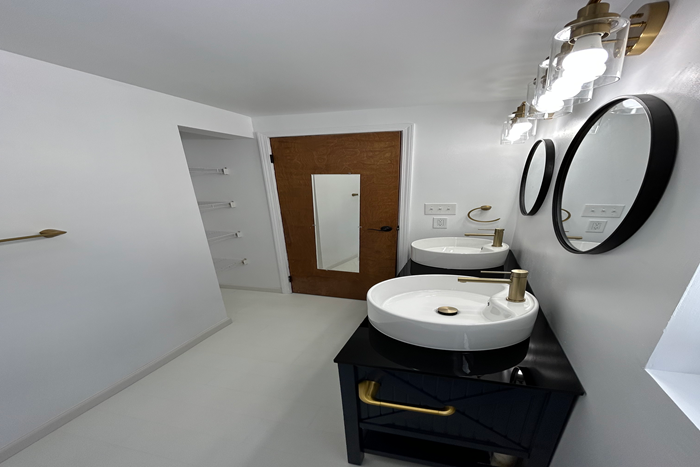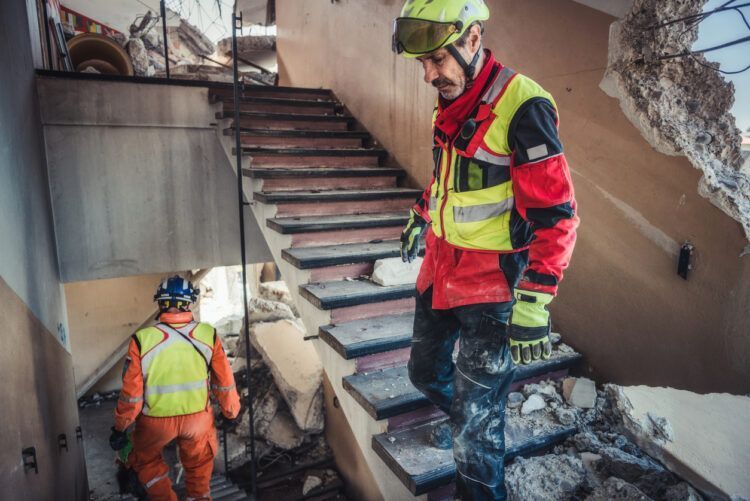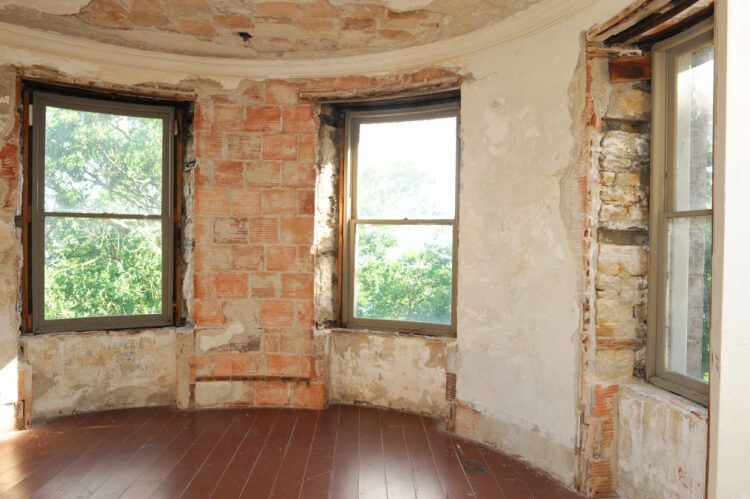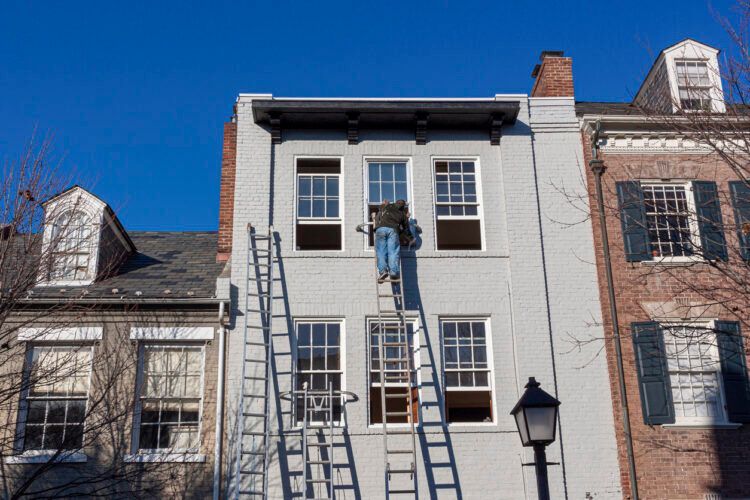Effective Mold Removal Strategies for Binghamton, NY Homes
Citiscape Construction
February 11, 2025
Mold removal is a crucial task for homeowners in Binghamton, NY, as the region’s humid climate can create ideal conditions for mold growth.
Identifying, assessing, and effectively removing mold is essential to protect your health and your home’s structural integrity.
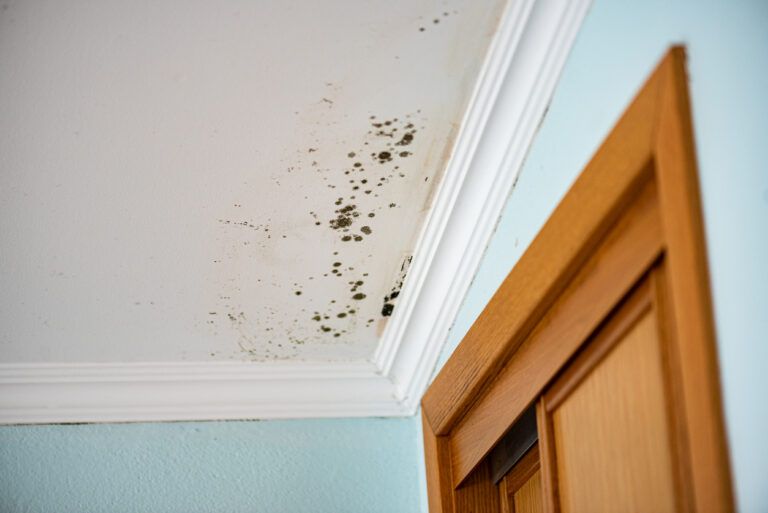
Black mold growth along ceiling corner needs remediation
How to Identify Hidden Mold Growth in Your Binghamton Home
Mold often thrives in hidden areas of your home, such as attics, crawl spaces, basements, behind walls, under flooring, and even inside HVAC systems and ductwork.
These areas provide the damp, dark conditions mold needs to grow unnoticed.
Signs of hidden mold include persistent musty odors, especially in damp or poorly ventilated spaces, as well as visible water stains or discoloration on walls, ceilings, or floors.
Peeling paint or wallpaper and worsening allergy symptoms at home can also indicate a hidden mold problem.
If you suspect mold growth, professional inspection and testing can help identify the source and extent of the issue.
Addressing the problem early can prevent structural damage and protect indoor air quality.
To inspect for mold, use a flashlight to check dark or hidden areas, and consider using a moisture meter to detect high humidity levels that could indicate potential mold growth.
| Location | Why Mold Grows There | Inspection Tips |
|---|---|---|
| Attics | Poor ventilation, roof leaks | Check insulation, rafters, and sheathing |
| Basements | High humidity, flooding | Look for water stains, efflorescence on walls |
| HVAC Systems | Condensation, lack of maintenance | Inspect drain pans, coils, and ductwork |
Understanding the Health Risks of Mold Exposure in Binghamton
Mold exposure can cause a range of health issues, including:
- Allergic reactions, such as sneezing, runny nose, and skin rash
- Asthma attacks in individuals with mold allergies
- Respiratory problems, like coughing, wheezing, and difficulty breathing
- Irritation of the eyes, skin, nose, throat, and lungs
- Opportunistic infections in people with weakened immune systems
Binghamton’s humid climate can exacerbate mold growth, increasing the risk of exposure and related health problems.
Vulnerable populations, such as children, the elderly, and those with compromised immune systems, are particularly susceptible to mold-related health issues.
| Mold Type | Health Risks | Vulnerable Populations |
|---|---|---|
| Aspergillus | Allergic reactions, lung infections | People with weakened immune systems |
| Stachybotrys (Black Mold) | Respiratory issues, headaches, fatigue | Infants, elderly, immunocompromised individuals |
| Penicillium | Allergic reactions, asthma attacks | People with mold allergies or asthma |
What’s Best for Your Binghamton Home Between DIY Mold Removal vs Professional
While some homeowners may try DIY mold removal using household cleaners like vinegar or bleach, this approach has limitations and risks, including inadequate removal that leads to regrowth, the spread of mold spores during cleaning, exposure to harsh chemicals without proper protective gear, and failure to address the underlying moisture issues that caused the mold in the first place.
Professional mold removal services offer several advantages, including:
- Thorough inspection and assessment of the mold problem
- Use of advanced techniques and equipment, such as HEPA filtration and negative air pressure
- Safe and effective removal of mold, including proper disposal of contaminated materials
- Identification and resolution of moisture issues to prevent future mold growth
| Factor | DIY Mold Removal | Professional Mold Removal |
|---|---|---|
| Effectiveness | May not remove all mold | Thorough removal using advanced methods |
| Safety | Risk of exposure to mold and chemicals | Proper protective gear and protocols |
| Prevention | May not address underlying moisture issues | Identifies and resolves moisture problems |
Top Mold Removal Strategies to Safeguard Your Home in Binghamton
Effective mold removal in Binghamton homes requires a strategic approach, starting with containment to prevent the spread of spores. Professionals then remove contaminated materials using specialized equipment, followed by thorough cleaning and disinfection to eliminate any remaining mold.
The final step is drying the area and addressing the root cause of moisture to prevent future growth.
Given Binghamton’s humid climate, moisture control is essential for preventing mold.
Homeowners should fix leaks in roofs, walls, and plumbing, improve ventilation in high-moisture areas like kitchens and bathrooms, and use dehumidifiers to keep humidity below 50%. Regular HVAC maintenance also helps prevent condensation and mold buildup.
| Mold Type | Removal Method | Prevention Strategy |
|---|---|---|
| Aspergillus | HEPA vacuuming, damp wiping with detergent | Improve ventilation, reduce humidity |
| Stachybotrys (Black Mold) | Remove and dispose of contaminated materials | Fix water leaks, maintain low humidity |
| Penicillium | HEPA vacuuming, cleaning with biocide | Improve air circulation, reduce moisture |
The Cost of Mold Removal in Binghamton, NY
The cost of mold removal in Binghamton varies based on factors like the size of the affected area, accessibility, type of mold, and the extent of contamination. Additional repairs and restoration needs can also impact the final price.
On average, professional mold removal costs range from $500 to $4,000 for small to medium-sized projects (10 to 100 square feet) and $4,000 to $10,000 for larger infestations (100 to 1,000 square feet).
Extensive cases involving structural damage or widespread contamination can exceed $10,000.
Homeowners’ insurance may cover mold removal caused by a covered peril, such as a burst pipe or storm damage.
However, most policies exclude mold resulting from neglect or lack of maintenance, so it’s important to address moisture issues promptly.
Why Effective Mold Removal Matters for Your Health and Home in Binghamton
Investing in effective mold removal is crucial for protecting your health and your home’s value in Binghamton. Living in a mold-infested home can lead to chronic health issues, decreased indoor air quality, and structural damage to your property.
By addressing mold problems promptly and thoroughly, you can:
- Safeguard your family’s health and well-being
- Prevent the spread of mold and minimize damage to your home
- Maintain your home’s value and marketability
- Avoid costly repairs and remediation in the future
If you suspect mold growth in your Binghamton home, don’t wait to take action.
Consult with a professional mold removal service to assess the situation and develop a comprehensive plan for removing the mold and preventing future growth.
By prioritizing mold removal, you can ensure a healthy, safe, and comfortable living environment for years
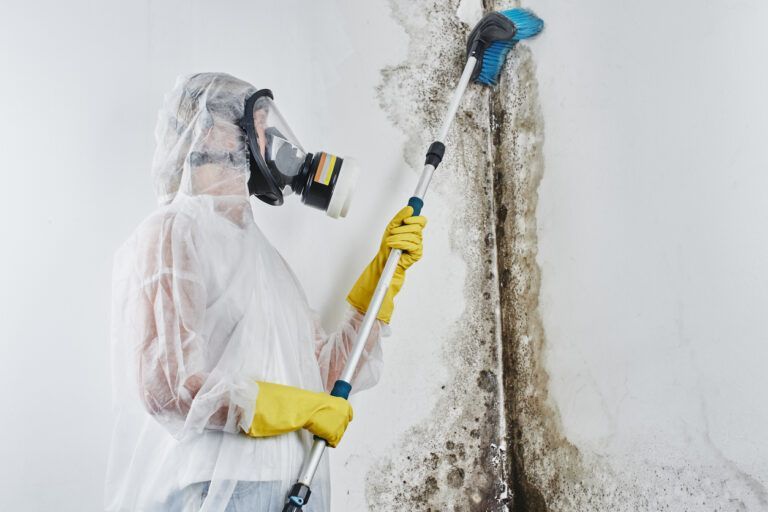
Professional mold removal specialist cleaning wall with safety equipment
FAQs
How can I tell if mold is hiding in my Binghamton home?
Signs of hidden mold include musty odors, water stains, peeling paint, and worsening allergic symptoms. Inspect dark or damp areas with a flashlight and moisture meter.
What are the health risks of mold exposure in Binghamton?
Mold exposure can cause allergic reactions, asthma attacks, respiratory problems, and opportunistic infections, especially in vulnerable populations like children and the elderly.
Is DIY mold removal a safe option, or should I hire a professional?
DIY mold removal has risks, such as inadequate removal, spread of spores, and exposure to chemicals. Professional services offer thorough, safe removal and prevention of future growth.
What are the most effective mold removal methods for homes in Binghamton?
Effective mold removal involves containment, removal, cleaning, and drying. Moisture control through leak repair, improved ventilation, and dehumidification prevents regrowth.
How much does mold removal cost in Binghamton, NY?
Mold removal costs in Binghamton range from $500 to over $10,000, depending on the size, location, and extent of the mold problem. Homeowners insurance may cover removal if the growth results from a covered peril.
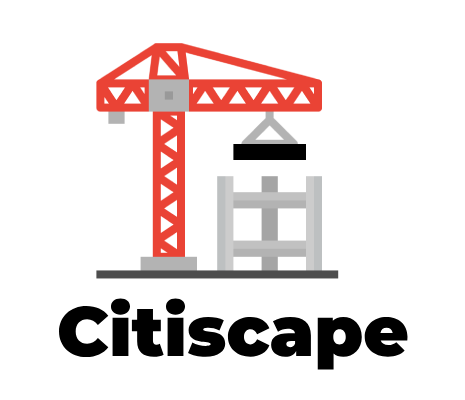
Citiscape Construction
Nick Riolo is the owner and founder of Citiscape Construction LLC, a family-owned and operated construction company based in Earlville, New York. With over 40 years of experience in the construction industry, Nick has dedicated his life to building and restoring homes in the central upstate New York region. Born and raised in upstate New York, Nick's passion for construction was instilled in him by his father, Nick Sr., a skilled craftsman and profound cabinet maker. Carrying on the family tradition of craftsmanship, Nick started Citiscape Construction in 1998 with the goal of providing honest and dedicated services to the community he calls home. Joined by his son, Nick III, who shares the same commitment to excellence, Citiscape Construction takes pride in their hands-on approach, completing all projects without subcontracting any work. Nick's expertise lies in residential construction, remodeling, and restoration, with a particular focus on quality and customer satisfaction. His team has undertaken challenging projects, such as the complete restoration of a 200-year-old abandoned home and the transformation of a 1,000-square-foot farmhouse into a 7,200-square-foot eccentric mansion with an attached, climate-controlled greenhouse. Driven by a passion for building dreams and creating comfortable living spaces, Nick and his team strive to deliver results that exceed their clients' expectations. With honesty, dedication, and over 25 years of experience in the business, Citiscape Construction has earned a reputation as a trustworthy and reliable contractor in the area. Visit www.citiscapellc.com to learn more about their services and how they can bring your home improvement visions to life.
